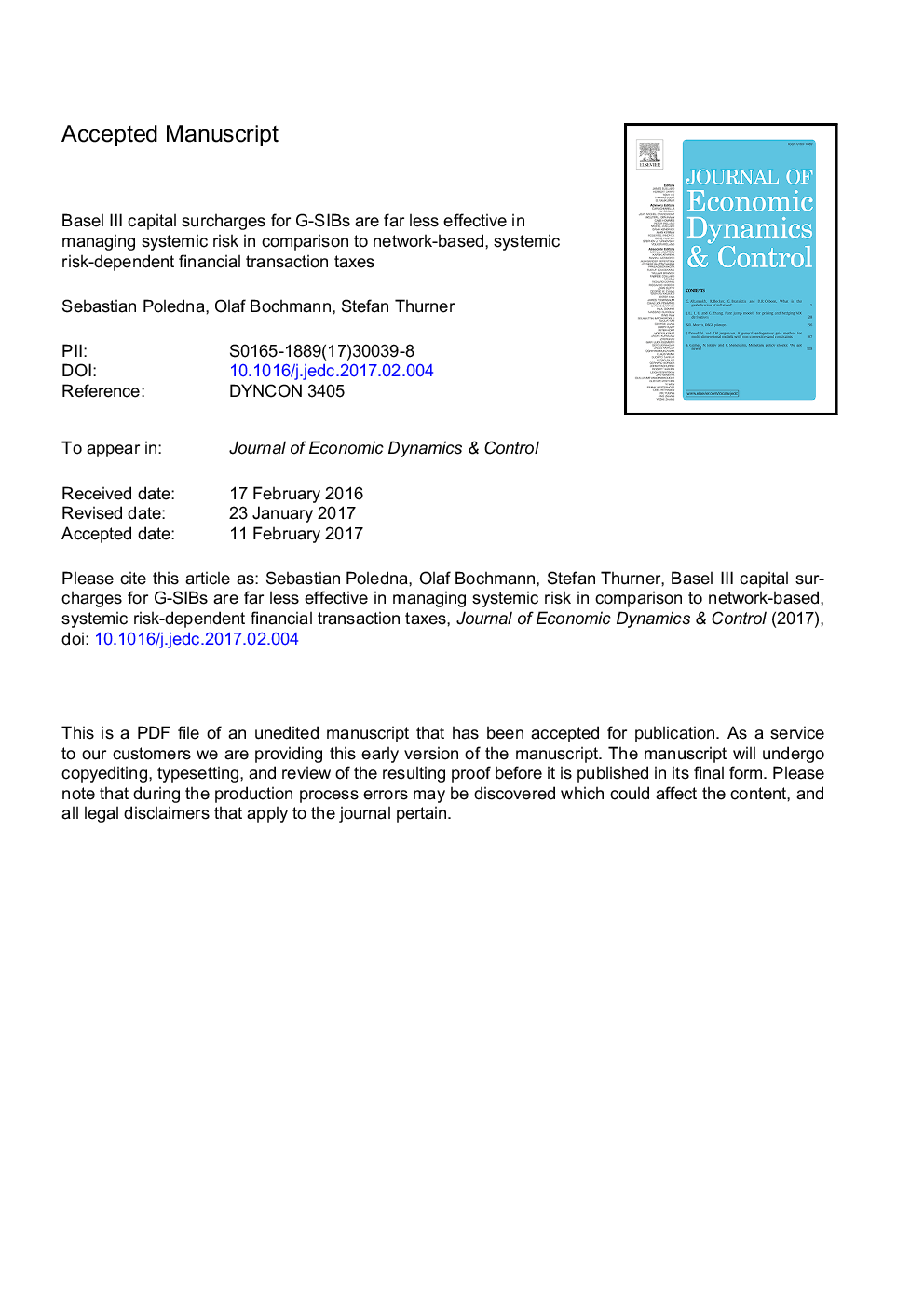| Article ID | Journal | Published Year | Pages | File Type |
|---|---|---|---|---|
| 5098076 | Journal of Economic Dynamics and Control | 2017 | 18 Pages |
Abstract
In addition to constraining bilateral exposures of financial institutions, there exist essentially two options for future financial regulation of systemic risk: First, regulation could attempt to reduce the financial fragility of global or domestic systemically important financial institutions (G-SIBs or D-SIBs), as for instance proposed by Basel III. Second, it could focus on strengthening the financial system as a whole by reducing the probability of large-scale cascading events. This can be achieved by re-shaping the topology of financial networks. We use an agent-based model of a financial system and the real economy to study and compare the consequences of these two options. By conducting three computer experiments with the agent-based model we find that re-shaping financial networks is more effective and efficient than reducing financial fragility. Capital surcharges for G-SIBs could reduce systemic risk, but they would have to be substantially larger than those specified in the current Basel III proposal in order to have a measurable impact. This would cause a loss of efficiency.
Related Topics
Physical Sciences and Engineering
Mathematics
Control and Optimization
Authors
Sebastian Poledna, Olaf Bochmann, Stefan Thurner,
